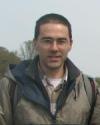FIP Seminar: Supercurrent in the quantum Hall regime
This event has passed.
Wed, 02/08/2017 - 12:00 to 13:00

Presenter
Dr. Gleb Finkelstein - Professor, Department of Physics, Duke University
Superconductivity and the quantum Hall effect are some of the most studied phenomena in condensed matter physics, both accounting for several Nobel prizes. The more familiar of these phenomena – the superconductivity – results in vanishing electron resistance, and has its roots in the Cooper pairing of electrons. The quantum Hall effect is observed in quasi-two dimensional electron systems subject to high magnetic fields, and results in precise quantization of electrical resistance to better than one part in a billion. Combining superconductivity and the QH effect is predicted to be a promising route for creating novel “topological” quantum states of matter. However, over the years attempts to induce superconductivity in the QH regime remained largely unsuccessful. Recently, Finkelstein's group demonstrated the existence of supercurrent in a QH regime in graphene (single atomic monolayer of graphite). The team was working with ultra-clean graphene encapsulated between layers of hexagonal boron nitride (BN) and contacted by MoRe alloy superconductor. Upon application of magnetic fields of a few Tesla, supercurrent was observed on top of the conventional QH features. This current, about ten thousand times smaller than measured at zero magnetic field, only existed at very small temperatures of tens of milliKelvin. Furthermore, it was found to be highly periodic in magnetic field, with the periodicity corresponding to the magnetic flux threaded through the graphene area. These observations were interpreted the first observation of supercurrent induced in the quantum Hall state.
Reference: F. Amet, C.T. Ke, et al., Science (2016)
Gleb Finkelstein obtained his PhD in Physics from the Weizmann Institute of Science in 1998, followed by postdoctoral work at MIT. He has been at Duke University since 2000. His group works on a range of subjects in condensed matter physics and nanoscience.
